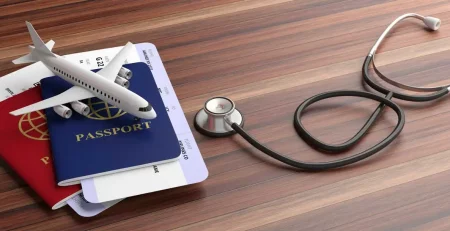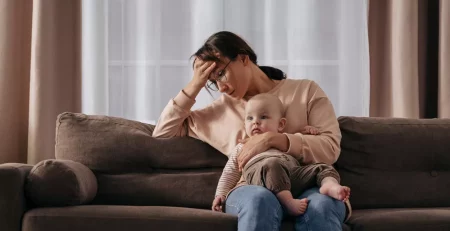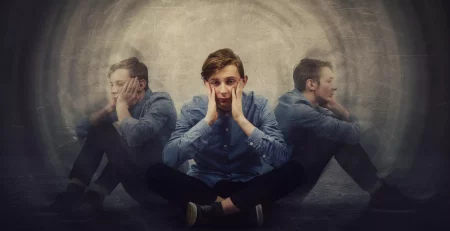Commonly Abused Benzodiazepines
Benzodiazepines are classified as Schedule IV drugs by the DEA. This means that they have some potential for abuse and can also be prescribed for medical uses. Benzodiazepines are often used in conjunction with other drugs, specifically alcohol and opioids.
In many cases of cocaine addiction, users will also take benzodiazepines to reduce the anxious feelings associated. This can lead to a polydrug addiction and can be quite dangerous.
How does Benzodiazepine Misuse Begin?
Benzodiazepines are prescribed to help with conditions in the short term, such as anxiety or insomnia. Typically they are prescribed to the elderly, even though they are associated with a high risk of falls and injuries.
Despite this, and that many studies show benzodiazepines affect memory, particularly in senior populations, they are still some of the most highly prescribed medications across the country.
Get Prescription Drug Help Now!
What are Benzodiazepines?
Benzodiazepines make up a class of central nervous system (CNS) depressants. They work with the neurotransmitter gamma-aminobutyric acid (GABA) and enhance its effects. GABA effectively slows nerve impulses throughout the body. It also results in increased feelings of relaxation and calmness. They produce sedation and relieve muscle spasms as well.
Used for many years to treat anxiety and panic disorders, benzodiazepines are often referred to as “benzos,” “downers,” “nerve pills,” or “tranks”. They work well in the short term, but should always be used under the supervision of a doctor. This is because they are extremely habit-forming.
Most Abused Brands of Abused Benzodiazepines

There are many types of benzodiazepines produced by pharmaceutical companies, but currently, about 15 are approved for use in the United States. The top five most commonly prescribed benzodiazepines include:
- Ativan (lorazepam): One of the more commonly prescribed benzos, Lorazepam is a common short-acting, short-term treatment for anxiety disorders as well as anxiety associated with depression. Ativan for alcohol detox is also commonly used.
- Xanax (alprazolam): In 2017, there were 45 million prescriptions dispensed for this drug. It is short acting, and is primarily prescribed to help those with anxiety, panic attacks, and depression. It is often abused.
- Restoril (temazepam): With 7 million prescriptions dispensed for temazepam in 2017, it is primarily used to treat insomnia.
- Klonopin (clonazepam): This is a short-acting benzo used to treat types of epilepsy. For seizure disorders, it is prescribed regularly, but for anxiety, it is used as needed.
- Valium (diazepam): There were 12.6 million prescriptions dispensed for diazepam in 2017, and it is one of the more well-known drugs. It is not frequently prescribed to treat anxiety and panic disorders, but it is often used to aid with delirium tremens and seizures associated with alcohol withdrawal.
Other commonly prescribed benzodiazepines include:
- Librium
- Niravam
- Halcion
- Tranxene
- Alprazolam
When reviewing benzodiazepines, Diazepam (Valium), alprazolam (Xanax), and lorazepam (Ativan) had the highest relative scale of benzo toxicity among drug abusers rating the high achieved.
Alprazolam (Xanax) and clonazepam (Klonopin) are the two benzodiazepines associated with the most abuse-related doctor visits. Those who suffer from alcohol abuse and antisocial personality disorder are at a higher risk of abusing these drugs. There are other options as well, such as Librium vs Halcion.
Immediate Help For Benzodiazepines Addiction
What are the Warning Signs of Benzo Misuse?
Prescription drug misuse and benzos are very common, and also dangerous. Knowing the warning signs can help you to avoid the risks of benzodiazepines.
Psychological Side Effects
Benzodiazepines are prescribed for their relaxing and calming effects. Despite this, there can be other side effects as well. These can occur depending on the type of benzo used, as well as how much, and each individual user.
Other common psychological side effects of benzodiazepine use may include:
- Mental confusion
- Frequent and sudden feelings of annoyance
- Irritability
- Major changes in behavior
- Extreme drowsiness or lack of interest
- Manic-type moods
- Unwillingness to do tasks requiring attention
- Impaired thinking, memory, and judgment
- Disorientation
- Confusion
- Muscle weakness
When you take a benzodiazepine, it works to slow down specific parts of the brain. The central nervous system (CNS) becomes depressed in individuals who use these drugs at high doses and can even lead to becoming more lethargic and apathetic.
Because some benzodiazepines are eliminated from the body at a very slow rate, abusing them in large doses may cause the drug to build up in fatty tissue. This can delay feelings of oversedation.
Physical Side Effects

The physical side effects of benzodiazepine use are usually the most obvious sign that someone is abusing benzodiazepines. This is because they only usually occur when someone is taking too much of the drug.
Common physical side effects of benzodiazepine use include:
- Extreme drowsiness
- Slurred speech
- Loss of coordination
- Repetitive, uncontrolled eye movement
- Muscle weakness
- Headache
- Dizziness
- Nausea and vomiting
- Loss of appetite
- Constipation
- Feeling lightheaded
- Lack of coordination
- Altered vision
- Tremors
- Respiratory depression
- Vertigo
Medically Prescribed Risks
Known to contribute to poor concentration, they also contribute to slow function and learning. Despite this, the severity and type of cognitive impairment will depend on the type and dosage. It is important to note that drivers who use benzodiazepines are twice as likely to be involved in a motor vehicle crash as compared to those who are not impaired.
The Need for Benzodiazepine Treatment in Albuquerque
When a person becomes addicted to benzodiazepines, it is often because it provides a feeling of euphoria. This is specifically with large amounts of this drug. They are very habit forming though, which means that if they are taken under non-medical circumstances, or taken more than prescribed by your physician, these drugs can be quite dangerous.
Despite this, those who struggle with benzodiazepine abuse or addiction are more likely to experience side effects. This is true, especially at higher doses.
Free Mental Health Assessment
Side Effects of Benzodiazepines at High Doses
- Slowed reflexes
- Slowed breathing
- Lowered blood pressure
- Mood swings or irritability
- Erratic, unpredictable behavior
- Aggression or hostility
- In the most dangerous withdrawals, stupor or coma.
The most common symptoms are associated with benzodiazepine withdrawal and rebound effects. This is because benzodiazepine drugs reduce the uptake of the GABA neurotransmitter. When this stops, the brain will fire rapidly. This means that those who have been addicted, or simply who took the drug as prescribed, may experience rebound insomnia, anxiety, and panic attacks. In some severe cases, benzodiazepine withdrawal syndrome can be developed, which can include dangerous seizures.
Mental Health and Benzodiazepines
One form of addiction therapy is called dual diagnosis treatment. This form of treatment is for those who are addicted to benzodiazepines but also struggling with a mental health disorder. This is actually very common when it comes to benzodiazepine usage because they are only prescribed to those who are suffering from mental health disorders in the first place.
Black Box Warning
Although benzodiazepines are legal, you may wonder can you overdose from benzodiazepines? It is true that you can overdose on them. Therefore, an opioids and benzodiazepines black box warning exists.
The “black box warning” states that the concurrent use of opioids and benzodiazepines increases the risk of fatal overdose. These black-box warnings appear on the labels of prescription drugs and call attention to serious or life-threatening risks.
Seeking Treatment for Benzos in New Mexico
Overcoming benzodiazepine use requires a treatment process called a benzodiazepine taper. Although benzodiazepine toxicity is something to be worried about, going through a gradual decline can help. Additionally, having ongoing support throughout withdrawal will help users to explore the causes of their drug use.
The most effective way to overcome a benzodiazepine drug addiction is to go to a treatment program, such as our offerings at Icarus Behavioral Health. Treatment will be personalized to meet a person’s needs, especially in the case of dual diagnosis.
Common Treatments for Benzodiazepine Use
- Medically supervised detox for benzos: Medical detox offers a safe and supervised setting to undergo serious symptoms of withdrawal. This treatment is essential for those who are severely addicted or dependent on benzodiazepines.
- Behavioral Therapy: Treatment programs for benzodiazepine use usually involve a combination of both individual counseling sessions as well as group therapy. Behavioral therapy programs can help to address drug use and teach healthy skills. The most common approach for overcoming benzo use is cognitive-behavioral therapy (CBT).
Find Top Addiction Treatment in New Mexico at Icarus
If you or someone you love is suffering from benzodiazepine abuse or addiction, there is hope. Whether your addiction is to benzodiazepines on their own, or with other drugs as well, professional help is the best and safest possible way to address the issue.
At Icarus Behavioral Health we have the tools to guide you to lasting recovery and stable, anxiety-free, health. Contact our compassionate Admissions team today to learn more about what we can offer.












